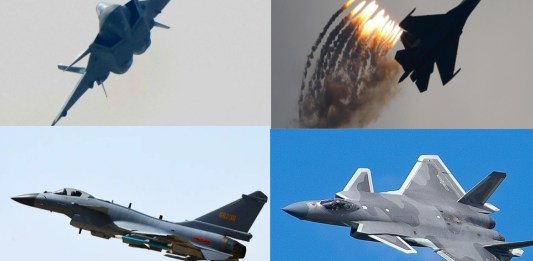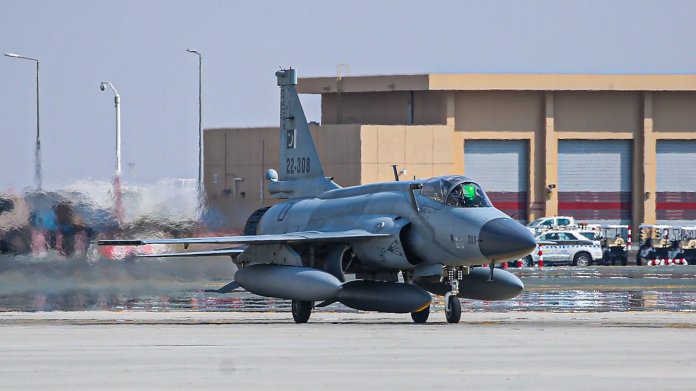India's plan to procure 114 Multi-Role Fighter Aircraft (MRFA), a highly anticipated defense deal, remains uncertain. The Indian Air Force (IAF) currently operates 31 fighter squadrons, well below the authorized 42, and needs more to face its two major adversaries.
The IAF has ordered nearly 200 Light Combat Aircraft (LCA) Mk1 and Mk1A variants and has committed to 200 LCA Mk2s. However, nine years after the first IAF LCA squadrons were formed, only about 40 LCA aircraft are in service. Even with increased production to 24 aircraft per year, it will take time to meet the required numbers. India's Advanced Medium Combat Aircraft (AMCA) is still over a decade away, and the aging MiG 21s are still in use. The Jaguars and Mirage 2000 fleets need to retire by around 2030. Despite the push for self-reliance, India will need to induct the 114 MRFA to bridge the gap.
The initial Medium Multi-Role Combat Aircraft (MMRCA) process was limited to 36 Rafale jets due to technical reasons. The IAF has specified the operational requirements for these 114 aircraft.
A recent report by the Parliamentary Standing Committee on Defence highlighted delays in delivering the initial 40 LCAs to the IAF and suggested exploring the purchase of fifth-generation fighter aircraft.
MRFA Competition
India issued a Request for Information (RFI) in April 2018 for the 114 MRFA. Responses from contenders were received later in 2018. The Indian Navy was also asked to consider new fighter jets alongside this program. The Navy needs a twin-engine fighter, focusing on the Boeing F/A-18E/F Super Hornet and Dassault Rafale-M, likely opting for 26 Rafale-Ms.
Eight aircraft are competing for the IAF’s MRFA: Boeing F/A-18E/F Super Hornet, Boeing F-15EX Eagle II, Dassault Rafale, Eurofighter Typhoon, Lockheed Martin F-21 (a variant of the F-16V customized for India), Mikoyan MiG-35, Saab JAS-39 Gripen E/F, and Sukhoi Su-35.
The next step involves the Defence Acquisition Council's (DAC) Acceptance of Necessity (AoN) and issuing a Request for Proposal (RFP). Even if the RFP is issued today, it could take over five years for the aircraft to be inducted. India's security establishment must make an early decision on the 114 aircraft import.
Big Ticket Assessment
Russia has proposed two aircraft: the MiG-35, which did not qualify in the earlier MMRCA selection, and the new Su-35. The Su-35, part of the Su-27/30 family, is not a viable option due to India's already significant fleet of similar aircraft and planned upgrades. The Russian industry is also preoccupied with domestic demands due to the Russia-Ukraine conflict.
If the Indian Navy selects the Rafale-M, the interest in the F/A-18 Super Hornet will decline. India has invested in the Rafale infrastructure and modifications, suggesting that acquiring more Rafale jets, potentially making 140 (114+26) in India, is logical.
The Saab JAS-39 Gripen E/F and Eurofighter Typhoon are strong contenders. The Gripen, with its GE 414 engine, and Eurofighter, with its extensive global presence, offer good options, although geopolitical factors and technology transfer levels will influence the decision.
US Influence in India's Aircraft Ecosystem
India has already integrated several US aircraft, including the Boeing P8I, Lockheed C-130J, and others. The upcoming purchase of General Atomics MQ-9B Predator Drones further solidifies US involvement. Evaluating the F-15EX and F-21 (an advanced F-16 variant) is essential.
The F-15EX, with its impressive payload and advanced features, is a heavy, costly option, adding complexity to India’s diverse fleet. The F-21, an advanced F-16, offers in-country production potential but faces public perception challenges due to Pakistan's use of F-16s.
Conclusion
India must make a one-time purchase of 114 aircraft, ideally the same type for the IAF and Navy, with significant technology transfer and in-country production. The US is eager to integrate into India’s fighter aircraft ecosystem, reflecting geopolitical closeness. Ideally, the US should offer the F-35, addressing technical barriers like the S-400 linkage.
Balancing India's aircraft mix to reduce dependence on Russian and Western suppliers while increasing indigenous production is crucial for long-term strategic autonomy.



